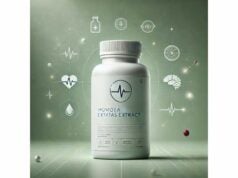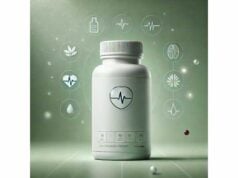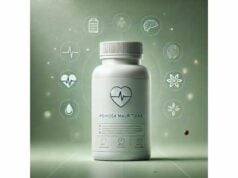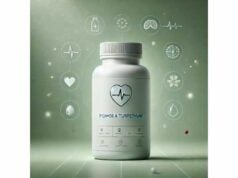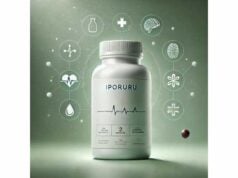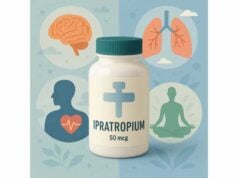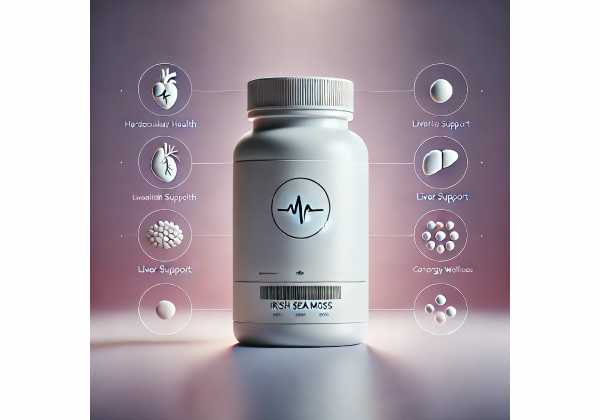
Irish sea moss, often labeled as Chondrus crispus or simply “sea moss,” is a red seaweed long used as a thickener in foods and as a traditional wellness tonic. Today it shows up as dried flakes, capsules, and gels. People reach for it to support thyroid function, digestion, and skin hydration, and to add a plant-based source of minerals to smoothies and soups. Its main bioactives are sulfated polysaccharides called carrageenans, along with trace minerals such as iodine and potassium, and small amounts of vitamins and amino acids. While sea moss is nutrient-dense, quality varies widely by species and harvest site, so it pays to choose lab-tested products and use doses that keep iodine within safe limits. This guide explains what Irish sea moss is (and is not), how it may help, how to use it safely, who should avoid it, and what the research actually shows.
Essential Insights
- May support gut regularity and act as a soluble fiber source (2–4 g/day fiber from typical food-use portions).
- Contains iodine that can support thyroid hormone production when intake is within daily needs.
- Typical supplemental dose: 500–2,000 mg/day dried powder or 1–2 teaspoons gel; keep total iodine near 150–300 mcg/day (max 1,100 mcg).
- Safety caveat: seaweeds can accumulate iodine and heavy metals; use products with current Certificates of Analysis (COAs).
- Avoid if you have thyroid disease, are on thyroid medication, or have chronic kidney disease unless your clinician approves.
Table of Contents
- What is Irish sea moss?
- What benefits are realistic, and why?
- How to use it and prep it well
- How much to take and when
- Common mistakes and how to buy quality
- Side effects, interactions, and who should avoid it
- Evidence snapshot: what studies say
What is Irish sea moss?
Irish sea moss is the common name for Chondrus crispus, a red macroalga that grows on North Atlantic coastlines. In the kitchen it’s prized because its sulfated polysaccharides—kappa, iota, and lambda carrageenans—form gels that thicken dairy and non-dairy desserts, plant milks, and soups. In supplements, “sea moss” is sometimes a different red seaweed (often Gracilaria species from the Caribbean). The label matters: Chondrus crispus and Gracilaria share similarities but can differ in texture, carrageenan profile, and mineral levels, including iodine.
Nutritionally, this sea vegetable is mostly water and fiber. Dried sea moss contributes soluble fiber, small amounts of protein, and minerals such as iodine, potassium, magnesium, and calcium. The iodine amount varies by species, season, and water chemistry. That variability is why one jar can provide too little, another too much, if it’s not standardized. Quality brands test each lot and state iodine per serving so you can stay within safe intake ranges.
Carrageenans are the headline bioactives. As soluble fibers, they bind water, influence viscosity in the gut, and can bind bile acids. Those physical effects explain several proposed benefits: stool softening and regularity, potential modest effects on blood lipids, and slower gastric emptying for better satiety signals. Sea moss also contains phenolic compounds and pigments (e.g., carotenoids) that act as antioxidants in vitro. While that’s promising, human outcomes depend on dose, matrix, and individual diet, so expectations should stay measured.
A final identity check: “carrageenan” on food labels usually refers to purified, food-grade carrageenan extracted from red seaweeds, including Chondrus crispus. Whole sea moss products are not identical to isolated carrageenan powders used by the food industry. Whole-seaweed gels also contain minerals and other fibers not present in an isolated additive. That distinction is important when reading research headlines and safety debates.
What benefits are realistic, and why?
Digestive regularity and gut comfort. The soluble fiber in sea moss increases stool water content and softness, which can support regular bowel movements in people who fall short of daily fiber goals. A modest daily amount—think a half to one teaspoon of gel stirred into food—can add a couple of grams of fiber without introducing rough insoluble fragments. People sensitive to fermentable fibers may notice gas if they jump straight to larger servings. A slow ramp helps.
Thyroid support through iodine. Iodine is required to produce thyroid hormones T3 and T4. If your diet undersupplies iodine, a standardized sea moss serving that provides about 150 micrograms can help you meet daily needs. This benefit flips to a risk when intake is excessive, especially with non-standardized products. The goal is adequacy, not “more.” Choose products that declare iodine content and avoid stacking multiple iodine-rich supplements.
Metabolic markers and lipids. Carrageenan’s ability to bind bile acids can lead to increased fecal bile loss and a small compensatory draw on circulating cholesterol to synthesize new bile. That mechanism parallels how other soluble fibers modestly influence LDL cholesterol. Some small human studies using carrageenan-containing foods have reported reductions in total cholesterol and triglycerides with maintained HDL. These are preliminary, involve specific carrageenan types and doses, and should not be interpreted as drug-like effects. The practical take: when sea moss replaces ultra-processed, low-fiber calories in a balanced diet, it can contribute to heart-healthy patterns.
Satiety and weight management routine. Soluble fibers create viscosity, which can slow gastric emptying and enhance feelings of fullness after a meal. If you blend a measured portion of gel into a breakfast smoothie that already contains protein and fruit, the added thickness often reduces mid-morning snacking. The effect is behavioral and supports consistency rather than causing dramatic weight loss by itself.
Skin hydration and barrier care. Topical cosmetic formulas sometimes use sea moss extracts for texture and occlusion; orally, overall hydration and nutrient sufficiency are what matter most. There is no strong evidence that ingesting sea moss alone transforms skin, but when it helps you meet fiber needs and stay on track with a mineral-sufficient diet, people often report subjective improvements in dryness and regularity that indirectly support skin comfort.
Immune and anti-inflammatory pathways. In cell and animal models, sulfated polysaccharides from Chondrus crispus modulate inflammatory signaling and oxidative stress markers. Translating that mechanistic promise into everyday human benefits requires larger, well-controlled trials using standardized preparations. Until then, it’s fair to consider immune effects an area of active investigation rather than a proven benefit you should count on.
Bottom line for benefits: sea moss can be a useful soluble-fiber adjunct and a controlled iodine source when used thoughtfully. Expect subtle, diet-pattern-level gains—better regularity, easier fullness, and support for meeting mineral needs—rather than “detox” claims or rapid transformations.
How to use it and prep it well
Decide on form. You’ll see sea moss as dried whole fronds, milled powders, capsules, and ready-made gels. Dried fronds and powders are closest to whole food. Capsules are convenient for travel but can obscure iodine content if the label lacks a tested value. Ready-made gels are easy to use but perishable and should list both iodine content and a fill date.
Prep from dried fronds (kitchen method).
- Rinse thoroughly under cool water to remove sand and surface salt.
- Soak in plenty of fresh water for 8–24 hours, changing the water once; the fronds will swell.
- Blend 1 part soaked sea moss with 2–3 parts fresh water until very smooth.
- Refrigerate the gel in a clean glass jar; it sets as it chills. Use within 7–10 days.
- Freeze extra portions in ice-cube trays for up to 2–3 months to keep quality and reduce waste.
Add to foods you already enjoy.
- Smoothies: 1–2 teaspoons of gel adds body without much taste.
- Soups and stews: whisk in near the end to thicken gently.
- Overnight oats or chia pudding: fold in a teaspoon for texture.
- Homemade plant milks and yogurt: small amounts help stabilize.
Pair it with your routine. The easiest way to stay within safe iodine and fiber ranges is to use small, repeatable portions. For most adults, that means one measured serving daily rather than large, sporadic amounts. Blend it into a breakfast you eat consistently (e.g., a smoothie) or a mid-afternoon yogurt.
Storage and hygiene. Whole seaweeds are real foods; handle them like perishable ingredients. Keep gels refrigerated, use clean utensils to avoid contamination, and discard if you notice off smells, mold, or separation that does not whisk back together.
Special notes for taste and texture. Properly soaked and blended sea moss has a neutral, ocean-adjacent flavor. Any strong “fishy” odor usually indicates poor rinsing, spoilage, or a product that includes other seaweeds. If flavor sensitivity is a barrier, start with capsules from a brand that discloses iodine per capsule and third-party testing.
Allergen check. Seaweeds are not crustaceans, but cross-contact can occur in harvest or processing environments. If you have seafood allergies, choose suppliers that state allergen controls and consider starting with a very small amount under guidance.
How much to take and when
Set iodine first, then pick the serving. Adults generally need about 150 micrograms of iodine daily. During pregnancy and lactation, needs are higher. The tolerable upper intake level for adults is 1,100 micrograms per day. Because sea moss iodine varies, use products that list a tested iodine amount per serving so you can keep total daily intake—food plus supplements—near 150–300 micrograms unless a clinician advises otherwise.
Typical supplemental ranges (whole-seaweed products):
- Powder or capsules: 500–2,000 mg dried sea moss per day, ideally standardized to supply about 150 micrograms of iodine. Split doses (e.g., 500 mg twice daily) can be easier on the gut.
- Homemade or bottled gel: 1–2 teaspoons per day as a culinary thickener. If your gel’s iodine content is not measured, keep to the lower end and avoid stacking with other iodine-rich seaweeds or kelp.
For digestive regularity: start with ½ teaspoon gel or ~500 mg powder daily for one week, then adjust by ½ teaspoon or 500 mg as needed. Most people feel fiber effects within a few days.
For satiety with meals: take your serving shortly before or with breakfast. Combining with protein (e.g., yogurt or a protein smoothie) often enhances fullness.
When to avoid evening doses: large viscous servings late at night may cause fullness or reflux in sensitive individuals. If that happens, take sea moss earlier in the day and reduce the portion.
Cycling and breaks: if you’re using sea moss mainly as a fiber helper, daily use is fine. If you rely on it as your primary iodine source, re-check the iodine content each time you open a new lot and consider periodic breaks while ensuring iodine adequacy from other foods such as dairy, eggs, iodized salt, or a multivitamin.
Combine smartly, not excessively. Do not layer sea moss with other iodine-dense seaweeds (kelp, kombu) or separate iodine supplements unless your clinician is monitoring labs. If you already take a multivitamin with iodine, aim for a combined total near daily needs.
Common mistakes and how to buy quality
Mistake 1: Chasing “more iodine.” More is not better. High iodine can trigger thyroid dysfunction in susceptible people. Choose products that disclose a tested iodine amount per serving and keep your total intake within daily needs.
Mistake 2: Assuming all “sea moss” is the same. Chondrus crispus (true Irish moss) and Gracilaria (often sold as “sea moss”) differ in carrageenan type and mineral profiles. Either can be fine, but accuracy matters for expectations and labeling. The product should identify the species and harvest region.
Mistake 3: Ignoring third-party testing. Seaweeds can concentrate heavy metals like arsenic and cadmium from seawater. Reputable brands publish recent Certificates of Analysis for iodine and contaminants. Look for testing to current standards and batch numbers that match your jar.
Mistake 4: Over-thickening recipes. A tablespoon-plus of gel may look appealing in a video, but extra viscosity can cause bloating. Start with a teaspoon, assess texture and tolerance, then add more only if needed.
Mistake 5: Treating it like a cure-all. Sea moss is a supportive ingredient, not a substitute for a diverse, fiber-rich diet. You’ll see better results when you also hit daily fiber targets from legumes, whole grains, fruits, and vegetables.
Mistake 6: Skipping storage basics. Gels spoil like any fresh food. Keep them cold, use clean spoons, and finish within a week or so. If you won’t use it quickly, freeze in cubes.
What to look for when buying:
- Species and origin stated clearly (e.g., Chondrus crispus, North Atlantic).
- Standardized iodine per serving (target ~150 micrograms).
- COA for contaminants covering heavy metals and microbiology.
- Minimal additives for gels (ideally water and sea moss only).
- Transparent lot dating and shelf-life.
Budget tip: buying dried fronds and making gel at home is economical and gives you control over texture and freshness. Pair that with a separate, reliable iodine source in your diet so you are not relying on untested iodine estimates.
Side effects, interactions, and who should avoid it
Common, usually mild effects. Because sea moss is rich in soluble fiber, the most frequent effects are gastrointestinal—gas, bloating, or softer stools—especially if you increase portions quickly. Reduce the serving and build up gradually.
Iodine-related thyroid effects. Excess iodine can precipitate hypo- or hyperthyroid symptoms in susceptible people. Risk rises when you combine multiple iodine sources or use non-standardized seaweeds. If you have a history of thyroid disease, are on levothyroxine or antithyroid medications, or are pregnant or breastfeeding, discuss sea moss with your clinician and prioritize tested products with conservative iodine doses.
Heavy metals and contaminants. Seaweeds can accumulate arsenic, cadmium, lead, and mercury depending on waters and processing. Choose brands that provide recent third-party testing and harvest from clean waters. If you prepare from wild-harvested fronds, select reputable suppliers with traceability and quality controls.
Interactions and special precautions.
- Thyroid medications: keep iodine stable and consistent; sudden changes can alter dosing needs.
- Blood thinners and antiplatelet drugs: sea moss is not vitamin K-rich like some brown seaweeds, but any new supplement should be discussed with your care team to monitor coagulation targets.
- Electrolyte concerns: people with chronic kidney disease should avoid high-potassium seaweeds and unstandardized mineral supplements unless supervised.
- Allergy: rare, but cross-contact with shellfish facilities can occur. Start low and stop if you experience hives, itching, or swelling.
- Gastrointestinal disorders: individuals with active inflammatory bowel disease may be advised to avoid isolated carrageenan additives; whole-seaweed use should be individualized with clinician input.
Pregnancy and lactation. Iodine needs rise, but overshooting can harm maternal and infant thyroid function. If you use sea moss during pregnancy or breastfeeding, choose a product that declares iodine per serving and keep daily totals close to guideline targets from all sources combined.
When to stop and seek care. Discontinue and contact a clinician if you notice palpitations, unexplained weight changes, unusual fatigue, neck tenderness, or persistent gastrointestinal pain after starting sea moss.
Evidence snapshot: what studies say
What’s well supported. The physical effects of soluble fibers like carrageenans—water binding, viscosity, and bile acid binding—are established. These mechanisms plausibly support bowel regularity and small favorable shifts in blood lipids in some contexts. Sea moss can also help people meet iodine needs when the product’s iodine content is known and controlled.
What’s promising but preliminary. Small human studies have reported modest improvements in fasting lipids or stool frequency when foods containing specific carrageenans were consumed regularly. Reviews of Chondrus crispus detail antioxidant and anti-inflammatory actions in cell and animal models and characterize its varied polysaccharide structures. These data build biological plausibility but do not equal clinical proof for broad claims like “boosts immunity” or “improves skin.”
What remains controversial. Debate persists over gastrointestinal effects of ingested carrageenan, especially purified forms used as food additives. Some clinical research suggests that reducing dietary carrageenan may aid remission maintenance in ulcerative colitis, while other analyses focus on dose, structure, and preparation differences. Whole sea moss is not identical to isolated food-grade carrageenan, yet the discussion underscores the value of moderation and individualization for people with sensitive GI tracts.
Safety context. European risk assessments highlight two practical issues with seaweed consumption: iodine variability and potential heavy-metal exposure. Both are mitigated by standardized dosing, product testing, and attention to total dietary iodine. For most healthy adults, small, measured servings from tested sources fit comfortably within a balanced diet.
Take-home for readers. If you enjoy sea moss and want to include it, do so as part of a fiber-conscious, mineral-aware routine. Choose products with transparent testing, measure servings, keep iodine intake near daily needs, and track how your body responds. If you live with thyroid or kidney conditions, partner with your healthcare team before adding sea moss.
References
- Iodine – Health Professional Fact Sheet 2022 (Guideline)
- Dietary exposure to heavy metals and iodine intake via consumption of seaweeds and halophytes in the European population 2023 (Scientific Report)
- Blood cholesterol and lipid-lowering effects of carrageenan on human volunteers 2003 (RCT)
- A randomized trial of the effects of the no-carrageenan diet on ulcerative colitis disease activity 2017 (RCT)
- An update on the constituents and bioactivities of Chondrus crispus 2024 (Review)
Disclaimer
This article is for educational purposes only and is not a substitute for personalized medical advice, diagnosis, or treatment. Sea moss can affect thyroid function and may interact with medications. Always speak with a qualified healthcare professional before starting, stopping, or changing any supplement, especially if you are pregnant, breastfeeding, have thyroid or kidney disease, or take prescription medicines. If you choose to use sea moss, select lab-tested products and keep iodine intake within recommended limits.
If you found this guide helpful, please consider sharing it with friends or colleagues on Facebook, X, or your preferred platform, and follow us for future evidence-based wellness articles. Your support helps us continue creating high-quality, trustworthy content.

